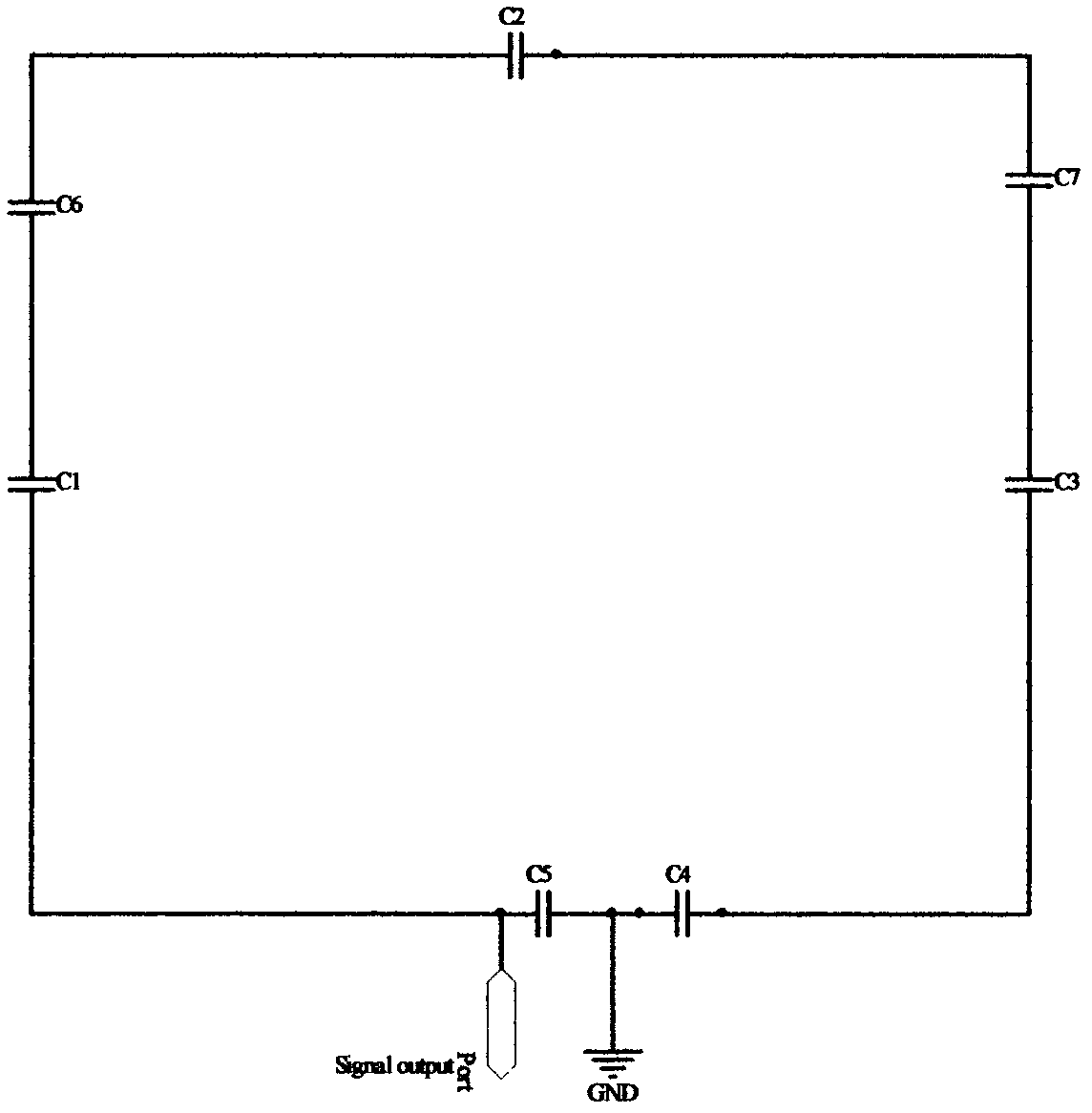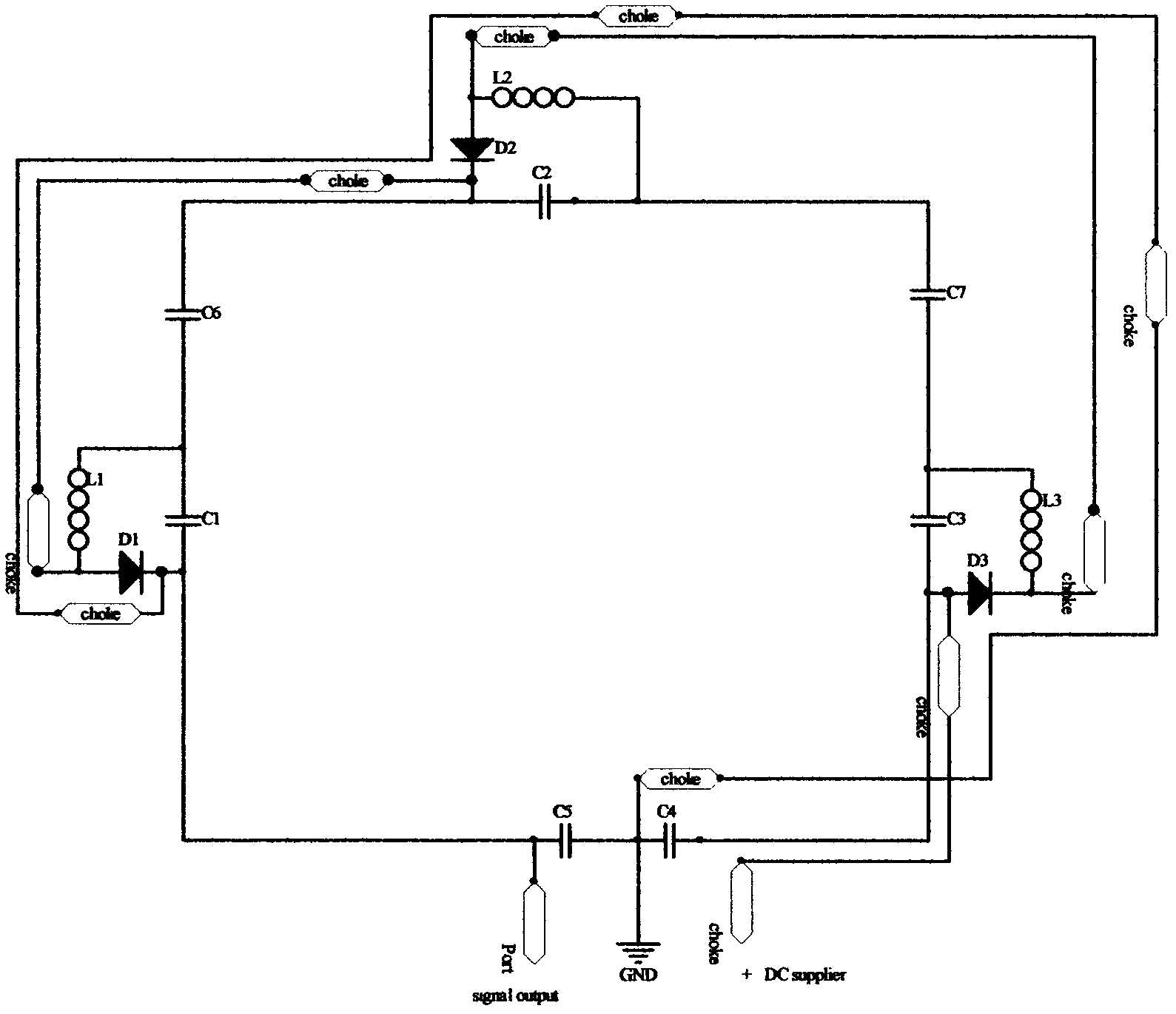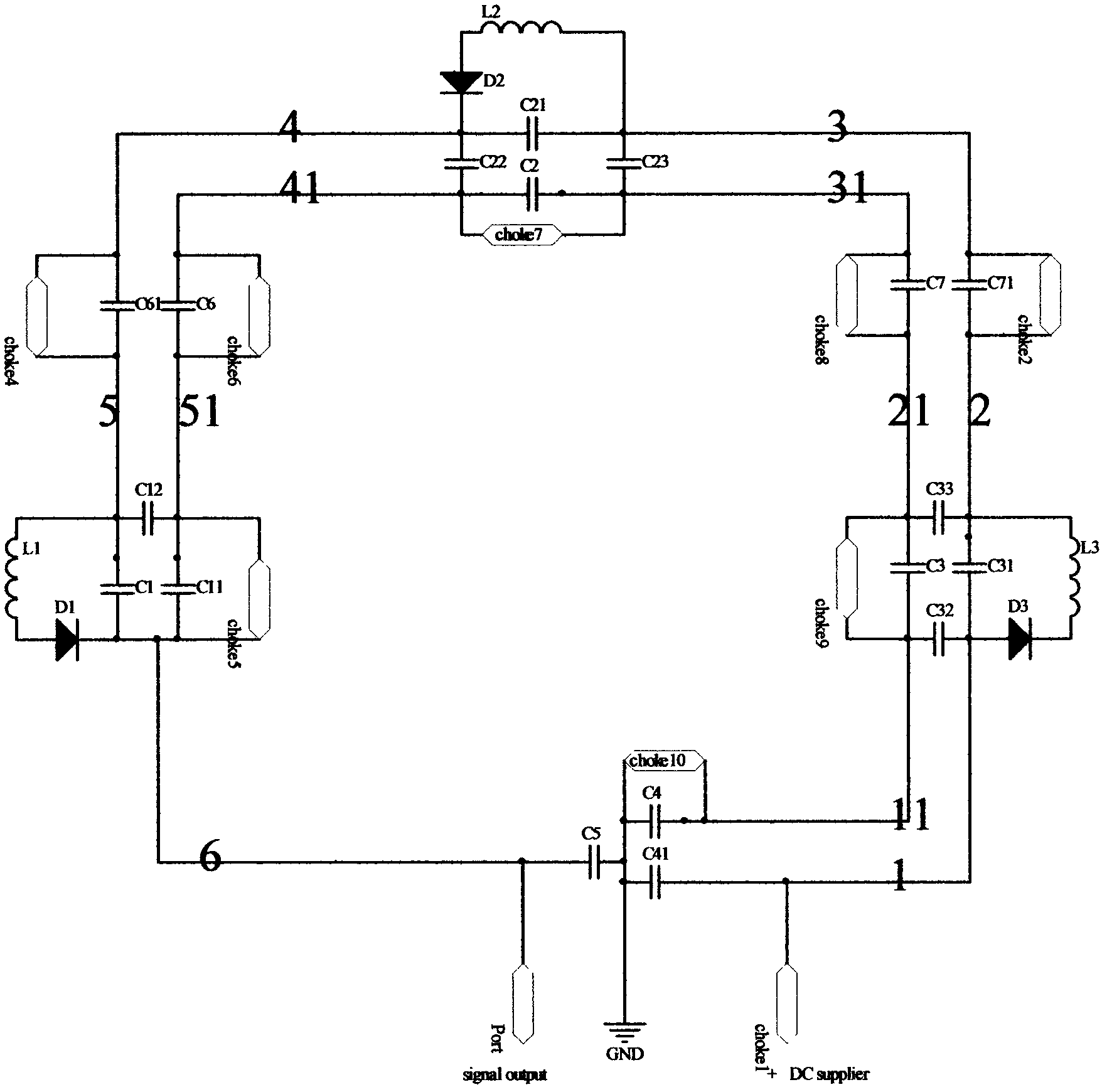Detuning magnetic resonance radio frequency coil without external direct current circuit
A technology of radio frequency coils and DC lines, applied in magnetic resonance measurement, medical science, sensors, etc., can solve problems affecting coil debugging and imaging performance, reducing coil imaging performance, coil heating, etc., and achieves a small impact on the uniformity of the main magnetic field, The effect of taking up less space and reducing negative effects
- Summary
- Abstract
- Description
- Claims
- Application Information
AI Technical Summary
Problems solved by technology
Method used
Image
Examples
Embodiment 1
[0029] like image 3 As shown, in this embodiment, the detunable magnetic resonance radio frequency coil without an external DC circuit includes an active detuning circuit and a resonant capacitor connected in series, and there are two copper-coated printed circuit boards between the active detuning circuit and the resonant capacitor. There are parallel resonant inductors, and the two parallel resonant inductors form a loop and are connected to the DC power supply driving the active detuning circuit. In most radio frequency coils, the inductance of the coil unit is one or two layers of copper in the double-layer PCB, that is, one or two layers of the top layer and the bottom layer of the double-sided PCB together form the inductance of the coil unit. The present invention uses such double-layer copper cladding, and through appropriate design changes, direct current can flow through the original radio frequency signal lines, thereby eliminating additional direct current lines a...
Embodiment 2
[0036] like Figure 4 As shown, this embodiment is basically the same as Embodiment 1, the difference is that the active detuning circuit adopts two parallel basic detuning circuits: the active detuning circuit includes two resonant inductances used to connect with one of the two resonant inductances The connected first capacitors, the two first capacitors are respectively connected in series with the inductor and the diode in sequence to form two parallel basic detuning circuits. Taking the first active detuning circuit on the input side of the DC power supply (DC supplier) driving the active detuning circuit as an example, the active detuning circuit includes two first capacitors C3 and C31, the input terminal of the first capacitor C3 and the resonant inductor 11 , the output end is connected to the resonant inductor 21 , the input end of the first capacitor C31 is connected to the resonant inductor 1 , and the output end is connected to the resonant inductor 2 . The first...
PUM
 Login to View More
Login to View More Abstract
Description
Claims
Application Information
 Login to View More
Login to View More - R&D
- Intellectual Property
- Life Sciences
- Materials
- Tech Scout
- Unparalleled Data Quality
- Higher Quality Content
- 60% Fewer Hallucinations
Browse by: Latest US Patents, China's latest patents, Technical Efficacy Thesaurus, Application Domain, Technology Topic, Popular Technical Reports.
© 2025 PatSnap. All rights reserved.Legal|Privacy policy|Modern Slavery Act Transparency Statement|Sitemap|About US| Contact US: help@patsnap.com



